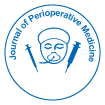
Journal of Perioperative Medicine
Open Access
ISSN: 2684-1290

ISSN: 2684-1290
Perspective - (2025)Volume 8, Issue 1
Preoperative cardiac risk assessment remains a cornerstone of safe surgical planning, particularly for patients with known or suspected cardiovascular disease. Traditionally, this evaluation relies on clinical risk scores, electrocardiograms and selective use of formal echocardiography or stress testing. While these methods have clear utility, they also present challenges: Formal cardiac imaging is often resource-intensive, may delay surgery and may not always reflect the patient's real-time hemodynamic status. In this context, Point-Of-Care Ultrasound (POCUS) has emerged as a transformative tool in perioperative medicine, offering real-time, bedside cardiac assessment that is both efficient and highly informative.
In high-income countries, where ultrasound technology is increasingly available and integrated into clinical training, POCUS is redefining the approach to preoperative evaluation. Its use by anaesthesiologists, internists and perioperative physicians allows for rapid assessment of cardiac function, volume status and even valvar pathology all in a matter of minutes at the bedside. This capacity to obtain dynamic, physiologic data without requiring patient transport or formal imaging appointments is especially valuable in busy preoperative clinics, emergency surgical settings and for high-risk populations.
One of the key applications of POCUS in the preoperative setting is the evaluation of left ventricular function. Identifying reduced systolic function, particularly in patients without prior heart failure diagnoses, can significantly alter aesthetic planning and perioperative management. Furthermore, patients with preserved ejection fraction but signs of diastolic dysfunction or left atrial enlargement may be at increased risk of postoperative complications, particularly fluid overload and pulmonary enema. POCUS enables clinicians to detect such findings early and tailor intraoperative fluid and hemodynamic strategies accordingly.
Assessment of right ventricular size and function is another valuable component of preoperative cardiac risk assessment. In patients with chronic lung disease, sleep pane, or pulmonary hypertension, right heart dysfunction may be under recognized yet important in determining perioperative risk. Point-of-care imaging can quickly reveal RV enlargement or septal flattening suggestive of increased pulmonary pressures, guiding further diagnostic workup or modification of the surgical plan. In addition to cardiac function, POCUS provides insights into volume status and preload dependency through Inferior Vena Cava (IVC) measurements and passive leg raise testing. For elderly or frail patients, many of whom are sensitive to even modest volume shifts, this information can refine preoperative hydration and aesthetic induction strategies, thereby reducing perioperative hypotension and related complications.
Importantly, POCUS also offers immediate value in the detection of structural cardiac abnormalities, such as significant aortic stenosis or mitral regurgitation, that may not be evident from history or auscultation alone. Identification of these findings preoperatively can prompt early cardiology consultation, further imaging if necessary, or at the very least, informed risk-benefit discussions with patients. The clinical benefit of POCUS lies not only in what it can detect, but in its integration into real-time decision making. Unlike formal echocardiography, which is often ordered by one clinician, performed by a second and interpreted by a third, POCUS empowers the bedside physician to directly acquire, interpret and act upon imaging findings. This immediacy is particularly relevant in time-sensitive or resource-constrained environments, including same-day surgery settings or patients presenting with incomplete medical records.
In high-income settings, the growing incorporation of POCUS into anaesthesiology and internal medicine training has enhanced both access and operator skill. Leading academic centres now include cardiac POCUS as part of perioperative assessment curricula, supported by simulation and credentialing pathways. Technological advances, including handheld ultrasound devices and AI-assisted image interpretation, are further democratizing the tool, making it more accessible to a broader range of clinicians. Despite its promise, the use of POCUS is not without limitations. Operator variability, image acquisition challenges in certain patient populations and the risk of over interpreting or misinterpreting findings underscore the need for proper training and standardized protocols. Moreover, POCUS should not be viewed as a replacement for comprehensive echocardiography when such imaging is clearly indicated. Rather, it should serve as an adjunct, enhancing clinical judgment and guiding timely escalation of care when needed.
Point of care ultrasound is rapidly reshaping the landscape of preoperative cardiac risk assessment. Its ability to provide immediate, dynamic and patient specific information at the bedside makes it a valuable tool in the hands of skilled clinicians, particularly in high-income healthcare systems where the infrastructure supports its widespread adoption. As perioperative care becomes increasingly complex and personalized, POCUS offers a pragmatic solution to connection between clinical suspicion and diagnostic clarity. When integrated thoughtfully into preoperative workflows and supported by robust training, POCUS not only enhances diagnostic accuracy but also promotes more informed, safer surgical care. Moving forward, embracing this technology as part of routine preoperative evaluation may represent a key step toward precision perioperative medicine.
Citation: Whitman SL (2025). Role of Point-of-Care Ultrasound in Preoperative Cardiac Risk Assessment. J Perioper Med. 8:264.
Received: 05-Feb-2025, Manuscript No. JPME-25-37974; Editor assigned: 07-Feb-2025, Pre QC No. JPME-25-37974 (PQ); Reviewed: 22-Feb-2025, QC No. JPME-25-37974; Revised: 02-Mar-2025, Manuscript No. JPME-25-37974 (R); Published: 09-Mar-2025 , DOI: 10.35248/2684-1290.25.8.264
Copyright: © 2025 Whitman SL. This is an open-access article distributed under the terms of the Creative Commons Attribution License, which permits unrestricted use, distribution, and reproduction in any medium, provided the original author and source are credited.